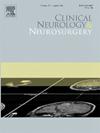特应性皮炎患者与卒中发生率之间的关系:一项系统综述和荟萃分析
IF 1.8
4区 医学
Q3 CLINICAL NEUROLOGY
引用次数: 0
摘要
背景:过敏性皮炎(AD)是一种慢性炎症性皮肤病,与多种合并症相关,包括心血管和心理健康问题。最近的研究表明,阿尔茨海默病与中风风险增加,特别是缺血性中风之间存在潜在联系。然而,两者之间的关系尚不清楚,需要进一步调查。方法本研究通过系统回顾和荟萃分析,探讨AD与卒中风险的关系。遵循PRISMA指南,在多个数据库中进行全面检索,包括PubMed/MEDLINE, Biblioteca Virtual em Saúde (BVS), Embase, Cochrane, Web of Science和Scopus。纳入了有关AD患者卒中发生率的观察性研究。进行荟萃分析以评估卒中发生率的优势比(OR)、危险比(HR)和相对危险度(RR)。采用Cochran’s Q检验、I²统计量和漏斗图评估异质性和发表偏倚。结果共纳入11项研究,以队列研究为主。荟萃分析显示AD与缺血性卒中风险增加之间存在显著关联,风险比为1.19(95 % CI 1.13-1.26, p <; 0.00001),异质性中等(I²= 57 %)。然而,出血性卒中风险未见统计学显著增加(HR = 1.13, 95 % CI 1-1.29, p = 0.06)。与轻度AD患者相比,重度AD患者卒中风险更高,or分别为1.29(95 % CI 1.07-1.56)和1.06(95 % CI 0.88-1.27)。该荟萃分析证实了AD与缺血性卒中之间的显著关联,特别是在严重AD患者中。需要进一步的研究来更好地理解这种关系,并探索潜在的预防策略,包括阿尔茨海默病治疗在降低卒中风险中的作用。本文章由计算机程序翻译,如有差异,请以英文原文为准。
Relationship between patients with atopic dermatitis and the incidence of stroke: A systematic review with meta-analysis
Background
Atopic dermatitis (AD) is a chronic inflammatory skin condition associated with a variety of comorbidities, including cardiovascular and mental health issues. Recent studies have suggested a potential link between AD and an increased risk of stroke, particularly ischemic stroke. However, the association remains unclear, warranting further investigation.
Methods
This study conducted a systematic review and meta-analysis to explore the relationship between AD and stroke risk. PRISMA guidelines were followed, and a comprehensive search was carried out in multiple databases, including PubMed/MEDLINE, Biblioteca Virtual em Saúde (BVS), Embase, Cochrane, Web of Science, and Scopus. Observational studies reporting on the incidence of stroke in patients with AD were included. A meta-analysis was performed to assess the odds ratio (OR), hazard ratio (HR), and relative risk (RR) for stroke incidence. Heterogeneity and publication bias were evaluated using Cochran's Q test, I² statistic, and funnel plots.
Results
A total of 11 studies were included, with the majority being cohort studies. The meta-analysis revealed a significant association between AD and an increased risk of ischemic stroke, with an HR of 1.19 (95 % CI 1.13–1.26, p < 0.00001) and moderate heterogeneity (I² = 57 %). However, no statistically significant increase in hemorrhagic stroke risk was observed (HR = 1.13, 95 % CI 1–1.29, p = 0.06). Patients with severe AD exhibited a higher stroke risk compared to those with mild AD, with ORs of 1.29 (95 % CI 1.07–1.56) and 1.06 (95 % CI 0.88–1.27), respectively.
Conclusions
This meta-analysis confirms a significant association between AD and ischemic stroke, particularly in patients with severe AD. Further research is needed to understand this relationship better and explore potential preventative strategies, including the role of AD treatment in reducing stroke risk.
求助全文
通过发布文献求助,成功后即可免费获取论文全文。
去求助
来源期刊

Clinical Neurology and Neurosurgery
医学-临床神经学
CiteScore
3.70
自引率
5.30%
发文量
358
审稿时长
46 days
期刊介绍:
Clinical Neurology and Neurosurgery is devoted to publishing papers and reports on the clinical aspects of neurology and neurosurgery. It is an international forum for papers of high scientific standard that are of interest to Neurologists and Neurosurgeons world-wide.
 求助内容:
求助内容: 应助结果提醒方式:
应助结果提醒方式:


